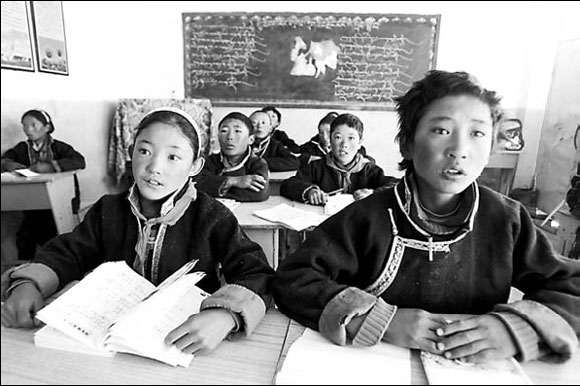 Tibetan students attend a class in a primary school in Nagarze county. File Photo
Tibetan students attend a class in a primary school in Nagarze county. File Photo
In Old Tibet, there were three types of schools: schools within monasteries, government-run schools and family-run, private schools.
Most students at the schools were children of aristocrats, monks who were also officials and rich businesspeople. More than 90 percent of the population was illiterate or semi-literate.
Today, an educational system is in place comprising pre-school; primary, secondary and specialized secondary education; polytechnic, vocational and adult education; and higher education. As of last year, there were six colleges, seven vocational schools, 117 middle schools and 884 primary schools.
More than 98 percent of school-aged children attended classes, and most were children of Tibetan or other ethnic minorities. Today, about 530,000 students attend school in the autonomous region, a fourfold increase over 1985. From 1990 to last year, the illiteracy rate among young adults and the middle-aged fell from about 70 percent to less than 10 percent.